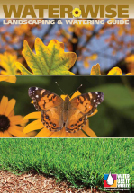|
|
Save Your Plants With Self Watering PlantersThen, you have people who are at home, but are just too busy to keep on a watering schedule for their house and/or container plants. They are always buying new plants to replace the ones that die from lack of water. Finally, you have those folks who go on vacation once, or a few times per year, and always have to hire someone to water their plants for them. For all of these people, self watering planters are a godsend. These planters allow you to continue to enjoy a plethora of different plants in and around your home without having to remember to water them. In fact, your plants will grow as well as they would if you fussed over them every day! The only thing you will have to do is keep check of the amount of water that remains in the built in reservoir of the planter. Depending on the size planter you choose, this only has to be done around once a week for small planters, and around once a month for large ones. This can vary, depending on where you have the planter located. This makes these planters a wonderful choice for anyone who yearns for flowers and greenery in and around their home, and meets the criteria listed above. Just how do these planters work? We mentioned the built in reservoir above, which is the key to the whole operation. It is attached to the bottom of the planter, and looks rather like a saucer placed beneath it. What is used to connect the water in the reservoir to the potting soil in the planter? Normally, this is called a water wick, and it is made from cloth specially formed to be absorbent. It is long enough to extend into the soil, so that the water absorbed through it is carried up into the root system of the plant. You don't have to worry about over watering, as the wick does not constantly absorb water. If it is water soaked, it will have to do some drying out before it is ready to work again. By that time, the soil in the planter has begun to get dry. It is a beautiful system that works like a charm. If you are planning to convert all of your indoor or outdoor planters to self-watering planters, be prepared to spend a nice chunk of change! The smaller planters are fairly reasonable in price, but the larger the self-planter, the more expensive. So, if you have a large planter on your patio that is planted with say, roses, you can expect to pay anywhere from twenty five dollars all the way up to more than two hundred dollars, as of this writing, to replace it with one of these planters. This wide range of prices has a lot to do with the style of the planter, and also the materials it is made out of. You can get really fancy with this kind of planter. There are varieties that are battery operated and give you and up-to-the-minute account of the amount of moisture in the soil. It actually will check the soil every thirty minutes, and add water until the soil is moist enough if needed – and all without you touching it! Fortunately, you don't need to spend that kind of money to take advantage of the ability to have your plants water themselves, unless you want to. If you'd rather save some cash, then there is a way that you can make your own self-watering planters. You can make small sizes out of an empty plastic gallon container, and larger ones out of an empty 5 gallon water cooler bottle. Use your imagination as far as containers go! These are ideal for those people who would like to try out the self watering concept before investing a lot of money in it. They are super easy to make! Cut your plastic container in half. The bottom of the bottle will be the part that holds the water. The top will be the planter. Get a piece of cloth long enough for the wick, and place it through the container's original opening. Now, place the original opening and the wick down in the water. You are ready to add your potting soil and plant to your new planter! Free yourself of the worry of watering your plants with this wonderful invention! For more information watering your plants, please read these articles: Installing drip watering system |
|
||||||||||
|
||||||||||||
|
|
||||||||||||



